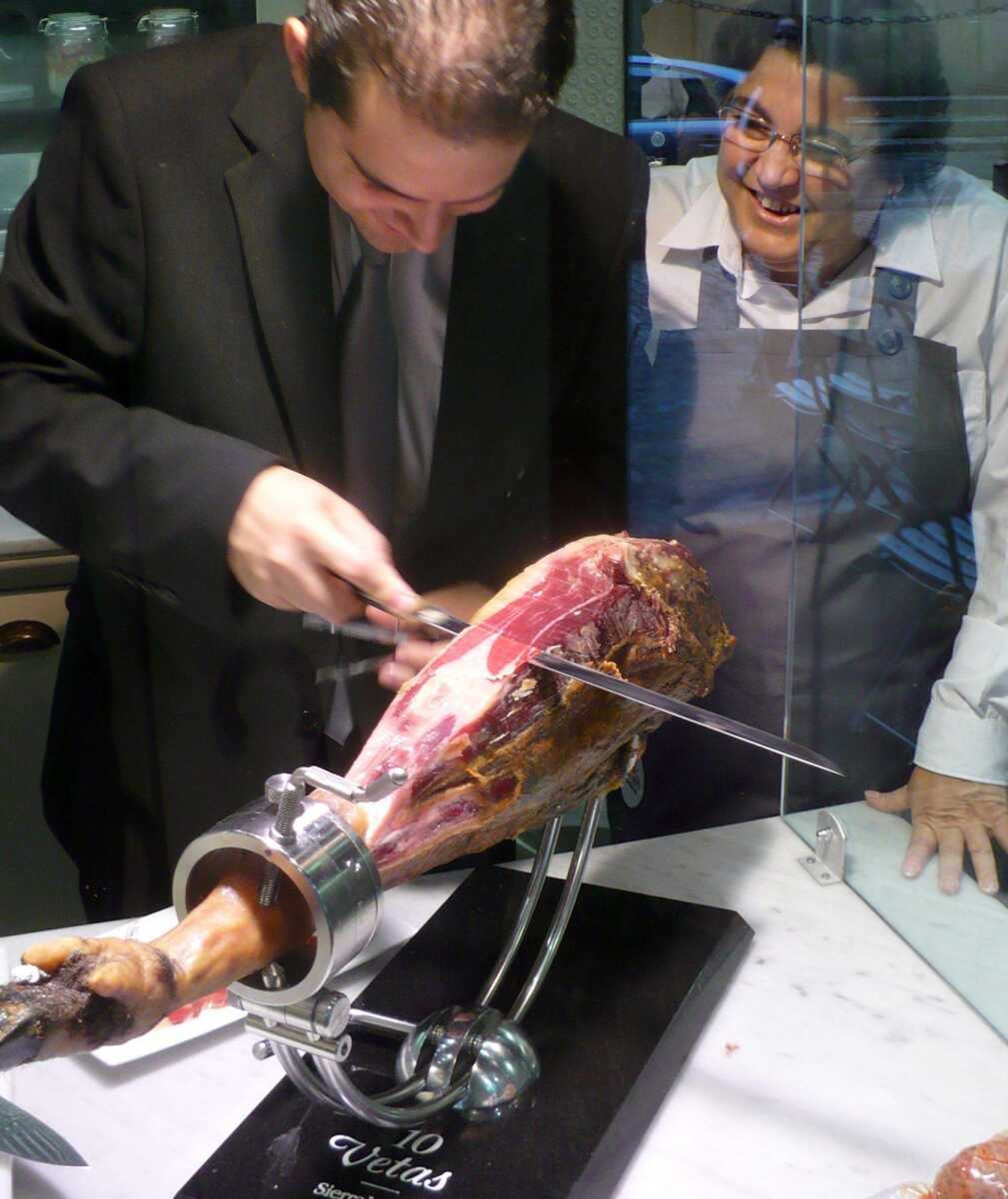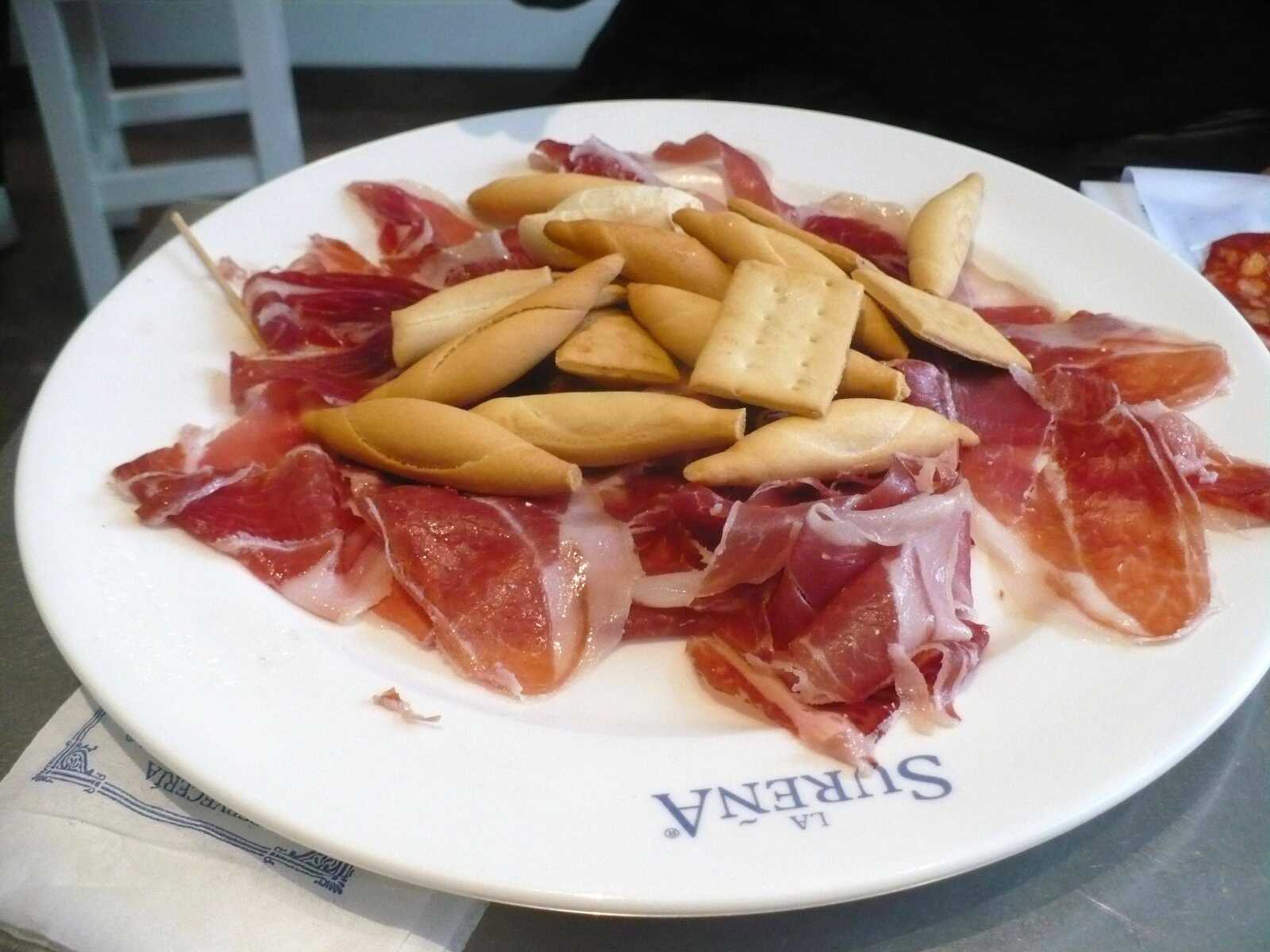With Easter just around the corner, ham consumption in the United States will soon peak. Ham, after all, is the traditional food of Easter in this country and has been for centuries. America's pork industry, in fact, owes its existence to the 13 pigs brought to the New World in the 16th century by the Spanish explorer Hernando de Soto.
It's ironic that the greatest holiday on the Christian calendar, marking the resurrection of Christ, is celebrated by Americans with a feast that features a food that Jesus, being Jewish, most likely never ate. That's because the tradition is less religious than practical. In olden days pigs were slaughtered in the fall and, because there was no refrigeration, the meat was cured for spring. By the time the process was complete, Easter had arrived and so ham was an obvious choice for the holiday.
Ever since, ham has mostly been a special occasion food in this country. That contrasts with the situation in de Soto's native land, where ham is an everyday affair.
For Spaniards, a meal wouldn't be a meal without at least a few slivers of ham. The country produces 40 million of them every year, making it the largest producer--and consumer--of ham in the world. Every café, bar or restaurant, even the most humble, has its own hams, usually hanging from the ceiling. There's even a chain of ham restaurants called the Museum of Ham. In my judgment, it ranks right up there with the Prado.
Though ham is a common sight on the tables of Spain, Spanish ham is by no means ordinary. It's nothing like the country hams of Virginia, and though served wafer thin like prosciutto, it surpasses even the famed Italian version.

The preeminent Spanish ham, Jamón Ibérico, is unquestionably the best ham in the world. Indeed, it is one of the best foods in the world -- period, rivaling Peking duck or Kobe beef and as exquisite as Russian caviar or French truffles.
Two things distinguish Iberian ham from lesser hams: the pig and what it eats. The pig is the Ibérico pig. Not your run-of-the-mill swine, it is big, often 350 to 400 pounds, with slender legs and a long snout. And it is black, with black hooves that remain on the ham through curing.
Ibérico pigs do not eat like other pigs. Rather, their diet consists primarily of acorns from Mediterranean oaks dotting the landscape in western Spain where the pigs roam free, each on an acre or more to itself.
These conditions produce a ham that literally melts in your mouth and which is, not surprisingly, pricey. It sells for upwards of $150 per pound, or a thousand dollars for a whole ham. It's worth it, but if that's outside your budget you can opt for Jamón Serrano, a far less costly Spanish staple that comes from commonplace white pigs. Its curing process is similar to that of Iberian ham, so it's still a cut above [pun intended] average hams.
Either way, if you're looking for the Holy Grail at Easter time, Spanish ham just may be it.
Iberian Ham with Tomato Relish
This adaptation of a recipe developed for the Food Network by the famed cooking duo of Mary Sue Milliken and Susan Feniger is a straightforward way to showcase Iberian ham. You can use another cured ham like proscuitto though, as any Spaniard will tell you, it won't be the same.
3/4 cup Jerez or sherry vinegar
1 cup Pedro Jimenez sherry or sweet marsala
2 pounds tomatoes
1 green bell pepper
1 red bell pepper
6 shallots
salt and pepper
1/2 pound thinly sliced Iberian ham
Combine vinegar and sherry and bring to a boil. Seed and finely dice tomatoes and peppers and finely dice shallots and add to mixture, seasoning with salt and pepper. Return mixture to a boil. Reduce heat and simmer, uncovered, until reduced and thickened. Cool. Spread relish on plates and top with ham slices.
Tom Harte's book, "Stirring Words," is available at local bookstores. A Harte Appetite airs Fridays 8:49 a.m. on KRCU, 90.9 FM. Contact Tom at semissourian.com or at the Southeast Missourian, P.O. Box 699, Cape Girardeau, Mo., 63702-0699.










